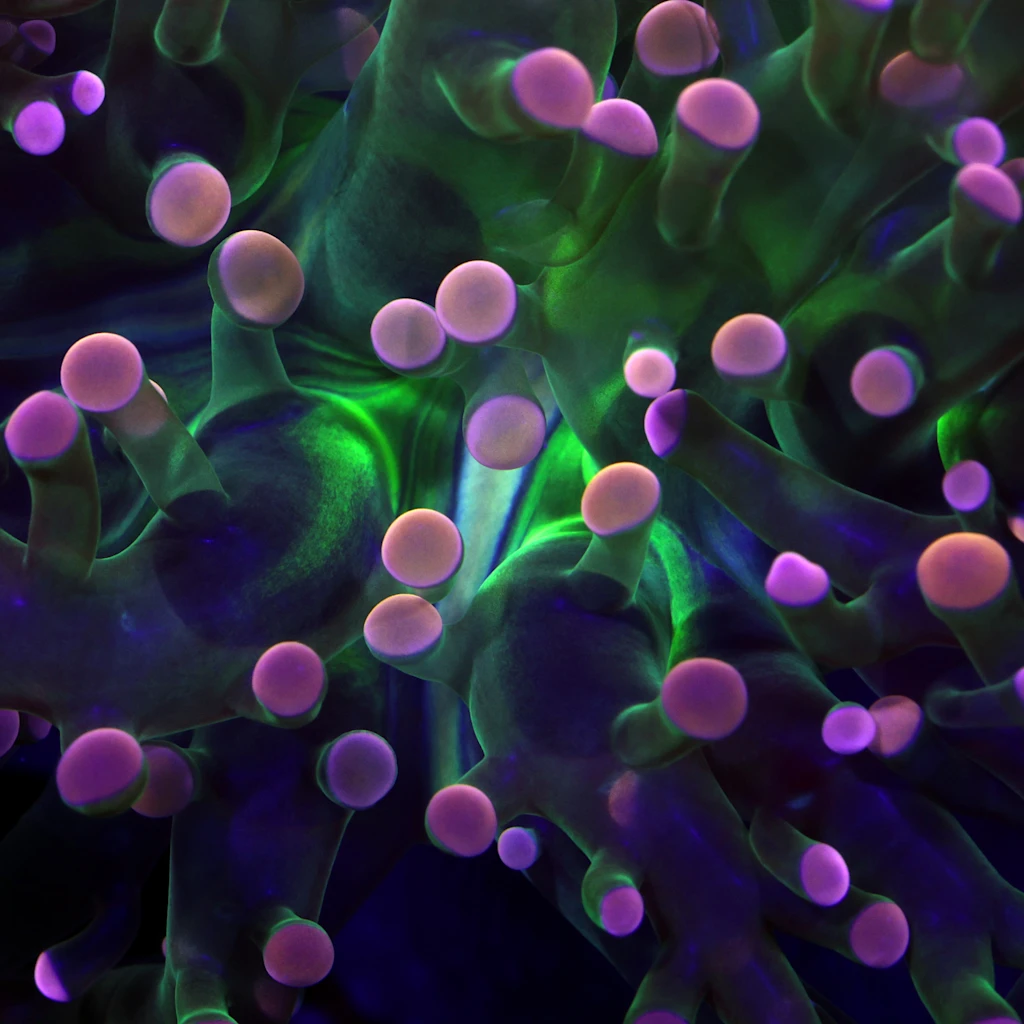
Corals live in oceans around the world—in shallow, warm waters and deep, cool waters, clinging to seamounts or sitting on continental shelves. They also grow in the home aquariums of countless hobbyists—and if you’re someone who cultivates corals in your spare time, you can contribute to research to help save the ocean’s coral reefs.
Rising ocean temperatures and increasing acidification are threatening coral reefs. Between 2009 and 2018, the world’s reefs lost 14% of their corals. By 2025, 84% of the oceans’ reefs have been affected by bleaching, meaning they’ve been so stressed by the changes to their environments that they’ve expelled all the algae living inside them, turning them white. As climate change worsens, coral loss is expected to speed up. Corals are also threatened by activities like fishing and tourism.
Corals are crucial to ocean ecosystems; they’re home to all sorts of marine life, provide coastal protection from storms, and are even the basis of millions of people’s livelihoods. Scientists have long been working to save coral reefs, trying to figure out how to help them survive higher temperatures and to bring back their healthy microbiome. (All the bacteria that live in corals can affect how the organisms respond to heat or other environmental changes.)
Home aquarists can now be a part of this effort too, through a community science effort called Project ReefLink. A partnership between Seed Health, a microbial sciences company, and the Two Frontiers Project (2FP), a nonprofit that focuses on microbial research, Project ReefLink aims to identify what sorts of organisms protect corals, and what pathogens may harm them.
From home aquarium to the oceans’ coral reefs
Corals growing in a home aquarium, or even big aquariums like Monterey Bay, are in a closed ecosystem. That essentially makes them part of a giant, human-driven experiment that’s already been going on for years, says Braden Tierney, a microbial scientist and executive director of 2FP
“All these aquarists are trying slightly different conditions. They’re putting different things in the water. They are experiencing different disease outbreaks. Some corals are dying. Some corals are living,” he says. “They have all these different species all over the place, and so we’re really asking to plug into that network.”
To get involved, an aquarist can visit the Project Reeflink website, where they can sign up to get a sampling kit. Then, they need to take pictures of their set up, documenting what species of corals they have, and send samples of some of their corals over to 2FP researchers.
From there, researchers will process the samples for DNA sequencing, and then look at the coral’s genome, as well as all the bacteria and viruses that live inside it. And don’t worry if your corals aren’t the healthiest—the scientists want a sample of any diseased corals too.
“There’s still so much to be learned about what actually causes coral disease, and this is an opportunity to get these samples back and say, ’here’s what’s causing the disease based on DNA sequencing,’ and ‘here’s what the healthy version of this species looks like,’” Tierney says.
Samples sent to 2FP will go into the nonprofit’s microbial culture bank, an open-source database that could eventually be used to find ways to help corals withstand bleaching or other climate threats. “We’re going to be able to explore how the microbiome plays a role in sustaining your coral’s health and also how it can be used to treat coral disease,” Tierney said.
“And as we get more data, we can also say, ‘oh, look, these species seem to really like these conditions that these aquarists are using in their tanks, whereas these other species don’t.’ And that can translate directly to understanding what causes disease in corals in the oceans,” he said.

The importance of microbiomes
Seed Health sells pro- and prebiotics for human microbiomes, and has conducted community science efforts for that focus before. It’s #GiveAShitForScience project involved people sending pictures of their poop to help understand gut health.
But the company also has an environmental research division called SeedLabs that looks at microbes in all sorts of ecosystems, with the aim to address the challenges of climate change. “The more you understand about microbiomes and systems biology, the more you start to understand the interconnectivity of all life on Earth,” says Ara Katz, CEO and cofounder of Seed Health.
Microbiomes—the trillions of microorganisms that live in our bodies or on plants or even in environments themselves—are crucial to the health of their hosts. Seed Health has studied if probiotics could help honey bees, how bacteria could turn plastic into new material, and the ways microbes can enhance carbon sequestration.
Seed Health previously partnered with 2FP on its CO2 research, for which they studied microbes in extreme conditions. That work also identified some microbes that could help corals become resilient to ocean acidification, particularly in especially hot or acidic waters where some corals do thrive.
Project ReefLink takes this work further by tapping into community scientists. That doesn’t only provide 2FP with diverse samples, it also helps connect people to science in general. “Science has really been mischaracterized in recent years, and I think that there is probably the least engagement there’s almost ever been,” Katz says. A community science project, though, spurs public engagement.
For an issue like coral bleaching or climate change in general, the issue can feel so overwhelming, or too complex to tackle. This project changes that, Tierney says. “If you have an aquarium . . . you can actually do something. You can take a few minutes to help,” he says. “It gives people a chance to fight.”